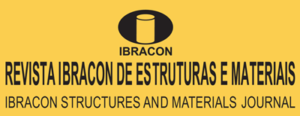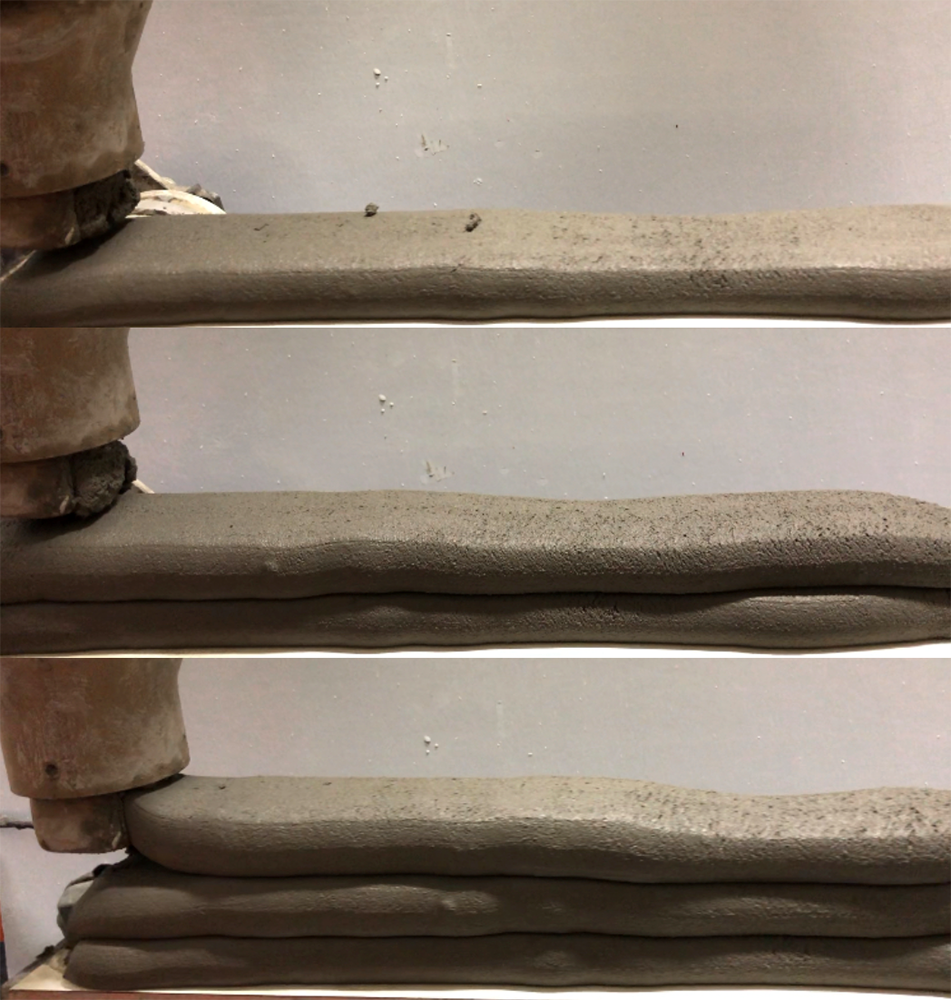By Jessica Amanda Hasse, Doctorate student at the Civil Engineering Post-Graduate Program of the Federal University of Santa Catarina (UFSC), SC, and CNPq scholarship recipient, Brazil
3D printing, initially developed within the scope of prototyping in the 1980s, has in recent years received growing interest from the construction sector, with promises to bring the long-awaited innovation to the field. Among some potential benefits of using this technology in the construction industry, it can be cited the reduction in building times, in labor costs and in expenses linked to the waste of materials, as well as the increased possibilities for customization of products delivered to customers and, mainly, the mass manufacturing of differentiated architectural designs (BUCHLI et al., 2018; MALAEB et al., 2015; WU, WANG, WANG, 2016).
In the process of 3D printing with concrete, the challenge of stacking layers that are tightly bonded to each other still persists. If the overlaps of the layers occur too quickly, they will not be strong enough to avoid deformations caused by their own weight, and on the other hand, if the optimal waiting time between depositions is exceeded, there will be loss of interlayer adhesion and formation of cold joints. (BUCHLI et al., 2018; MALAEB et al., 2015; WU, WANG, WANG, 2016).
In order to investigate a way of optimizing this material deposition window, researchers from the Federal University of Santa Catarina sought a way to change the rheological behavior of cementitious matrices through the use of viscosity enhancing admixtures (VEAs). As such materials potentially alter the viscosity of the mixtures, their addition could improve the structuration rate of printed concretes, which would result in a productivity gain in the printing process (EXPERTS FOR SPECIALIZED CONSTRUCTION AND CONCRETE SYSTEMS, 2016; KHAYAT, 1998).
In the study by Hasse et al. (2020), entitled “Increasing structuration rate of 3D printable concretes: the effect of viscosity enhancing admixtures”, published in the Revista IBRACON de Estruturas e Materiais (vol. 13, no. 4), four viscosity enhancing admixtures (three polymeric modifiers, and one bentonite clay) were used in order to benefit the structuration rate of printed concretes in order to improve buildability (rate of vertical elevation of the building by the successive deposition of layers), by increasing the flow resistance of the mixtures. The characterization of the different mixtures (including the evaluation of the consistency index and incorporated air content, isothermal calorimetry and rotational rheometry in the fresh state, and compressive strength in the hardened state), indicates that the polymeric modifiers did perform their job of promoting an increase in cohesion of the concretes, however, the magnitude with which the bentonite (mineral viscosity modifier in powder form) produced such effects, proved to be considerably superior to those produced by conventional polymeric modifiers.
Figure 1. Stacked printed layers
The results in the fresh state point to the technical feasibility of using viscosity enhancing admixtures in favor of the load capacity of the freshly printed concrete, due to the increased cohesion. It should be noted, however, that not all types of VEAs would be able to produce the same effect, while bentonites would be the best of the options, presenting a more effective behavior than any other viscosity modifier. Still, the mechanical results, unlike what could be expected when adding clay to concrete, indicate that it did not produce negative effects on the material’s strength. The findings, in addition to being positive for the 3D concrete printing area, also contribute to a better understanding of the effect of bentonite clays when inserted in cementitious matrices.
References
BUCHLI, J., et al. Digital in situ fabrication-Challenges and opportunities for robotic in situ fabrication in architecture, construction, and beyond. Cement and Concrete Research [online]. 2018, vol. 112, pp. 66-75, ISSN: 0008-8846 [viewed 11 September 2020]. DOI: 10.1016/j.cemconres.2018.05.013. Available from: https://www.sciencedirect.com/science/article/abs/pii/S0008884618300206?via%3Dihub
EXPERTS FOR SPECIALIZED CONSTRUCTION AND CONCRETE SYSTEMS. Guidelines for viscosity modifying admixtures for concrete. Berlin: EFCA, 2006.
KHAYAT, K.H. Viscosity-enhancing admixtures for cement-based materials — An overview. Cement Concr. Compos. 1998, vol. 20, no. 2/3, pp. 171-188.
MALAEB, Z., et al. 3D concrete printing: Machine and mix design. Int. J. Civ. Eng. [online]. 2015, vol. 6, no. 6, pp. 14-22, ISSN: 0976-6316 [viewed 11 September 2020]. Available from: https://www.iaeme.com/citearticle.asp?Ed=4817&Jtype=IJCIET&VType=6&Itype=6
WU, P.; WANG, J. and WANG, X. A critical review of the use of 3-D printing in the construction industry. Automation in Construction [online]. 2016, vol. 68, pp. 21-31, ISSN: 0926-5805 [viewed 11 September 2020]. DOI: 10.1016/j.autcon.2016.04.005. Available from: http://hdl.handle.net/20.500.11937/7988
To read the article, access it
HASSE, J.A., et al. Increasing structuration rate of 3D printable concretes: the effect of viscosity enhancing admixtures. Rev. IBRACON Estrut. Mater. [online]. 2020, vol. 13, no. 4, e13412. ISSN: 1983-4195 [viewed 25 August 2020]. DOI: 10.1590/s1983-41952020000400012. Available from: http://ref.scielo.org/6tzmtv
External links
IBRACON Structures and Materials Journal <http://www.ibracon.org.br/publicacoes/revistas_ibracon/riem/home.asp>
Nanotec UFSC <https://www.facebook.com/pages/category/Information-Technology-Company/Nanotec-UFSC-748145515580238/>
ORCID – Jessica Amanda Hasse <https://orcid.org/0000-0002-0885-2342>
Programa de Pós-Graduação em Engenharia Civil da UFSC <https://ppgec.posgrad.ufsc.br/?lang=en>
Revista IBRACON de Estruturas e Materiais – RIEM: <http://www.scielo.br/riem>
Como citar este post [ISO 690/2010]:




















Recent Comments